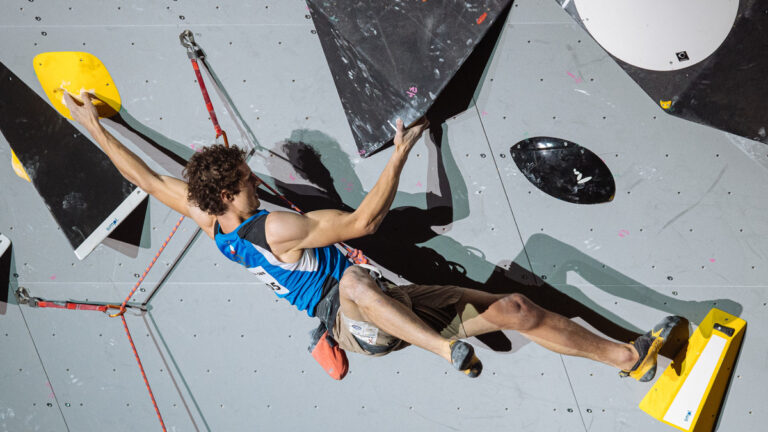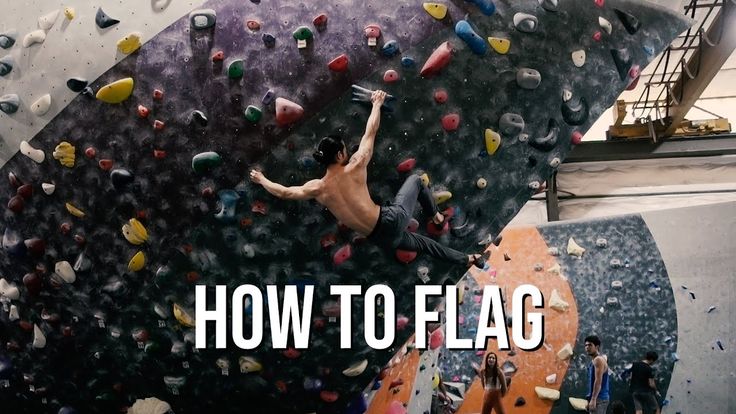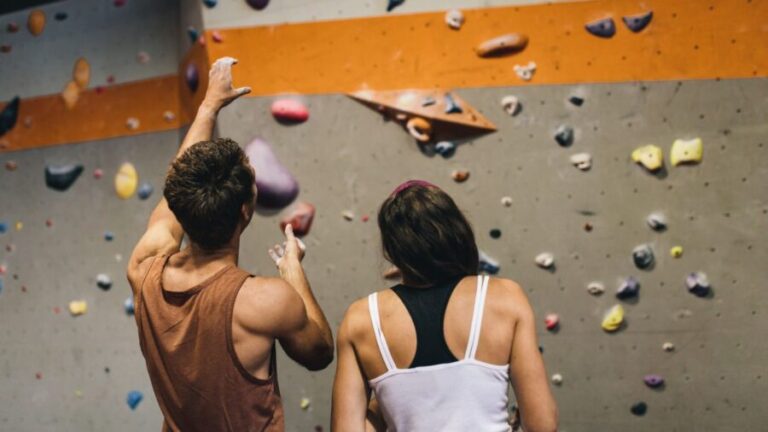The 15 Best Climbing Quickdraws of 2024
Best Climbing Quickdraws: We love fast quickdraws. A few climbing protectors can quickly and reliably transform feelings of uncertainty and discomfort into peace and happiness. However, trying to purchase quickdraws can be just as challenging as any other climbing equipment. This article will help you explore the wide range of options and find the perfect frame for your climbing needs. Below we will detail the best quickdraws of 2024. For more general information, see the comparison table and buying tips in the Selections section.
Best Overall Climbing Quickdraw

1. Petzl Spirit Express
Petzl Spirit Quickdraw 12 cm (Climbing Quickdraw) Best use: sport climbing.
Weight: 89-104 grams
Length: 11, 17, 25 cm.
What we like: Excellent handling and comfortable riding position.
What we don’t like: A little expensive and not very versatile.
It’s no surprise that the proven mastermind of Petzl tops this list. What’s wrong with a fast Cadillac? The carabiners are very soft, the dog bones feel stable and these items are very fun to wear. All materials are incredibly strong and durable, including the rubber ring that prevents the rope-side carabiner from tipping over. It’s also easy to snag or get stuck if you don’t have good supports, and the whole block is so strong that you can grab the bottom end of the box and grab the nail out of reach at the same time.
Petzl recently updated its Spirit Express carabiners, losing 4 grams per pull due to some cuts in the metal, as well as reducing the size slightly. But despite the updated version’s lighter weight, the Spirit remains too heavy and bulky for multi-pitch climbing. In fact, we’d be surprised if the Spirit Express ever made it to the Alps, and we definitely wouldn’t want to pair it with a wheel-nut-dependent steering wheel. But for sport climbing, whether it’s retargeting or long-term abandonment, this is the best model money can buy.
Best Ultralight Draw for Multi-Pitch Climbing

2. Black Diamond MiniWire
MiniWire Black Diamond quickdraw. Best use: mountaineering and traditional rock climbing.
Weight: 53 grams
Length: 12cm
What we like: Versatile, lightweight and affordable.
What we don’t like: Keyless design that doesn’t secure easily with accessible screws.
Black Diamond’s HotForge and HotWire below are great options for sport climbers, but for professional climbers looking to optimize their setups, the MiniWire is one of our favorite quickdraws. MiniWire rings are a relatively new addition to the Black Diamond line and combine a weight of less than 1 ounce with a large 21mm diameter bore. Instead of the rigid design of most graphs shown here, the MiniWire has a thin, flexible design. Overall, this is a great option for long trips where it’s important to have a lightweight backpack rather than a sturdy backpack.
The dog bone is 12cm long and the MiniWire weighs 53g. They’re also relatively affordable (when you buy 12-strand cable the cost adds up quickly), and the larger rings are easy to use. You get what you pay for, however: the MiniWire doesn’t have a keyed lock (on the other hand, this is less important when attaching cams instead of screws), and the dog bone isn’t very strong, making the job more difficult . To access the remote lock. As a good compromise, consider Black Diamond’s LiteWire Quickdraw ($20; 73 g), which combines a similarly profiled dogbone with slightly larger carabiners, making it the best lightweight option for those with smaller or larger hands.
Most Durable Climbing Quickdraw

3. Edelrid Bulletproof
Edelrid bulletproof quickdraw. Best use: sport climbing.
Weight: 118-124 grams
Length: 12.18 centimeters.
What we like: The strongest, highest quality tow rope on the market.
What we don’t do: Most of the time, don’t overdo it.
If the Petzl Spirit Express is a fast Cadillac, the bulletproof Edelrid could be a Hummer. It has all the features we look for in a premium sports frame, plus the added durability and strength of a small steel insert in the carabiner at the end of the rope. Steel is heavier than aluminum but more durable, so Edelrid was smart to add it only when necessary. If you use quick pulls to hang rope anchors or want to quickly tighten the first clamp (this is the clamp that sees the most wear on the rope), bulletproof tape is the most suitable bulletproof tape on the market.
Even without the steel padding it is incredibly attractive. The nose is narrow, easy to cut, the rings are large, the bone is nice and thick, everything is high quality. But given the weight and price of the Bulletproof, we recommend using traction only when it really matters. In other words: each mount can have two or three flak structures, but having more than that is overkill. And if you want to save money, know that you can get the same function with an economical steel carabiner.
Best Budget/Workhorse Quickdraw

4. Petzl Djinn Axess
Petzl Djinn Axess climbing ropes. Best use: sport climbing.
Weight: 107-113 grams
Length: 12.17 cm.
What we like: Very affordable price for a quality Petzl quick release.
What we don’t do: Heavy and bulky.
Petzl dominates the premium market, but it’s also our favorite workhorse: gin. For just $15-$16, this quickdraw is a steal: You get premium Petzl build quality, two large locking rings, and a rubber tab on the bottom ring, meaning it’ll still be oriented correctly for that hot jig. In fact, it doesn’t take long to warm up, write down design drawings, and identify red dots. As a bonus, the Genie is now available in gorgeous blue and purple colors instead of the standard Petzl gray and orange.
The Jinn is great value for those who spend time on rocks, but it’s too heavy for multi-rope climbing, especially when you can cut the weight in half with a crane like the Black Diamond MiniWire. Additionally, the carabiners are a little larger than the Spirit (which you may or may not like, depending on the size of your hands), and the finger on the rope side is not as aggressive and a little harder to use. . quill. . But for most climbers these are relatively minor complaints; Combining Petzl quality with a competitive price, the Djinn is our favorite workhorse of the year.
Best Premade Alpine Draw

5. Trango Phase Alpine
Edelrid bulletproof quickdraw. Best use: sport climbing.
Weight: 118-124 grams
Length: 12.18 centimeters.
What we like: The strongest, highest quality tow rope on the market.
What we don’t do: Most of the time, don’t overdo it.
If the Petzl Spirit Express is a fast Cadillac, the bulletproof Edelrid could be a Hummer. It has all the features we look for in a premium sports frame, plus the added durability and strength of a small steel insert in the carabiner at the end of the rope. Steel is heavier than aluminum but more durable, so Edelrid was smart to add it only when necessary. If you use quick pulls to hang rope anchors or want to quickly tighten the first clamp (this is the clamp that sees the most wear on the rope), bulletproof tape is the most suitable bulletproof tape on the market.
Even without the steel padding it is incredibly attractive. The nose is narrow, easy to cut, the rings are large, the bone is nice and thick, everything is high quality. But given the weight and price of the Bulletproof, we recommend using traction only when it really matters. In other words: each mount can have two or three flak structures, but having more than that is overkill. And if you want to save money, know that you can get the same function with an economical steel carabiner.
Best of the Rest

6. Black Diamond HotForge
Black Diamond HotForge Quickdraw. Best use: sport climbing.
Weight: 103-108 grams
Length: 12.16 cm.
What we like: Accessible and lockable on both rings.
What we don’t like: The graphics are fast and attractive, but not very noticeable in real-world use.
Black Diamond is synonymous with high-quality climbing gear, and their SpeedDraw line is no exception. Providing a balance between performance and price, HotForge is specifically designed for sport climbers. It has locking carabiners on both sides of the dog bone, making it easy to attach and remove in any direction. Basically, it’s everything we’re looking for in sport climbing, and it’s not too hard to burn your eyes out.
HotForge has replaced Black Diamond’s old Positron quickdraw with redesigned carabiners that manage to shave off a few grams and increase surface area for smoother rope handling (similar to improvements made to the previous HotWire). However, you get more door space (the bottom compartment has a 2mm smaller opening), and compared to the competition there’s nothing special about this freebie. But at just $20, it’s all most climbers need, and we like it for commercial work, too. Finally, if you like the feel of a metal cord closure but don’t want to give up the keyed carabiner feature on the bolt side, Black Diamond also offers the HotForge Hybrid for $20-$21.
7. Angelo Petzel Venice

Petzl Ange Finesse Speed Climbing Best use: Traditional, alpine, sport climbing.
Weight: 63-78 grams
Length: 4.17 cm.
What we like: The door design is a revolutionary way to save weight.
What we don’t like: The design takes some getting used to.
The Petzl Finesse Angel represents one of the greatest technological advances made so far in the field of carabiners. The single lever closure is not only lighter than traditional models, but also provides an incredibly smooth closure on both the latch and pull side. In short, you will hardly find another quickdraw that offers this type of performance with such a low weight. For this reason the Ange Finesse is a great monolift and one of our favorite models for both longer routes and single rope sport climbing. Its small tip fits both old vines and small pins and is ideal for climbing in places like Yosemite or Joshua Tree.
Our biggest issue with the Finesse Angel is the price: While Petzl recently lowered the suggested retail price on the Spirit and Djinn, the Angel has remained in the upper $20 range. Plus, we know some climbers who don’t like the feeling of being cut off from this particular pattern: the gates are so different that it may take some practice. But overall, the Ange Finesse has a premium, confident design and incredibly light weight, making it one of our top picks for challenging multi-pitch climbs. Finally, they are available in many configurations, including large or small rings and 10cm or 17cm dog bones.
8. DMM Alpha Sport

Quickdraw DMM Alpha VW 2020 Sports climbing Best use: Sports climbing.
Weight: 112-122 grams
Length: 12, 18, 25 cm.
What we like: Dog bone, which looks great; Ideal carabiners.
What we don’t do: Expensive and difficult.
At one end of the pricing spectrum we have the $15 Mammut Crag and at the other the luxurious DMM Alpha Sport. Consider it the antithesis of cheap and ordinary. The Alpha Sport features incredibly easy-to-use carabiners and a bone reminiscent of the original Petzl Spirits. The finishes are excellent (like all DMM products) and you can count on the long life of the materials.
So what’s up? At over 100 grams, the Alpha Sport is one of the heaviest models on our list, making it less versatile than others. In the sport climbing category, the Petzl Spirit is an undisputed classic and the best value for money. However, you may really like the unique shape of the Alpha Sport Carabiners and the dog bone is undoubtedly of high quality. Additionally, it is also available in a 25cm version, which some climbers will appreciate. Overall, this is one of the best sports attractions in the game if you’re willing to pay the expense.
9. Wild Country Astro

Astro Wild Country referral. Best use: trading, mountaineering.
Weight: 65-66 grams
Length: 10, 15 cm.
What we like: Light and simple, but perfect for climbing.
What we don’t like: It’s not as premium as Wild Country Helium.
On a recent sport climbing trip to Spain, we stocked up on (but totally luxurious) Petzl Spirits, and our European friends brought their Wild Country Astros collection. More than 20 people had run out of our 40-yard warm-up gear, so we had to borrow dozens of Astro quickdraws to lighten the load. While this feather thread portal may not be the best choice for most sport climbers, the Astros have become a godsend for hikers thanks to their compact size, ease of trimming, and closed nose that reduces the risk of breaking the bolts during cleaning.
If you’re primarily a sport climber, you’ll need to weigh the pros and cons between a powerful, sport-specific speed brake and a more aerodynamic, all-around brake. Do you pin your drawings to a project and keep them on the wall all day? Or perhaps you are an experienced mountain climber and often explore new routes. Next, you need to consider location: long roads are the norm in some regions (Europe), but not in others. Lightweight tow ropes like the Astro may not provide a smooth ride, but they have advantages for some climbers and for certain purposes.
10. Metolius Bravo II

Metolius Bravo II Climbing quickdraw Most effective use: alpine and traditional climbing.
Weight: 79 grams
Length: 15cm
What we like: Lightweight and affordable.
What we don’t like: It’s not as easy to handle as some of the more durable models mentioned above.
Metolius, based near the sport climbing mecca of Smith Rock, Oregon, is a small company specializing in climbing gear for all disciplines. And we would be remiss if we didn’t include the Bravo II quickdraw in this list. Like models like the Black Diamond MiniWire and Wild Country Astro, the Bravo II is a very versatile product that can do double duty on rocks or in the mountains. At the end of the rope, a rubber lock secures the carabiner in place for easy attachment (a feature we love in sports rods), and the flexible, minimalist design makes the carabiner easy to use for long casts in the Alps.
We’ve been taking a lot of Petzl Spirits and Bravo IIs to the rocks all season and regularly turned to the Spirits when it comes to the main sport climbs. In comparison, the Bravo feels flimsy, isn’t as easy to attach, and doesn’t have a locking carabiner on the bolt end. However, when it comes to installing traditional courts, we always choose Metolius, which offers a more flexible and lightweight design. Bottom line: We like the Bravo II for traditional and alpine trails, but prefer the stiffer body with a locking carabiner for sport harnesses.
11. Mammut Crag Wire Indicator Express

Mammut Crag Wire Express quickdraw indicator. Best use: sport climbing.
Weight: 104 grams
Length: 10, 15 centimeters
What we like: Affordable and great.
What we don’t like: It’s not as widely available as some of its competitors mentioned above.
Don’t let the rating fool you: the Mammut Crag Wire Indicator Express is a durable quickdraw with a stiff, solid frame that offers superior maneuverability for sport climbers. You get a locking carabiner on the bolt side and, as with Black Diamond’s HotForge Hybrid, a metal pin on the rope side to save weight and reduce finger tapping. Finally, the belt is equipped with an indicator (hence the name) which indicates in red when it is possible to remove it. This means you can be confident that Mammut will keep you safe throughout its lifetime.
At just $15, the Crag is one of the most affordable looks on our list. Sure, you can spend $10+ more on quickdraws like the DMM Alpha Sport or Camp Dyon, but mountaineering enthusiasts won’t get much benefit from these high-end models (and when you buy a dozen treadmills, the cost adds up quickly). . When choosing between HotForge Hybrid and Crag Indicator, the deciding factor for us is availability: while the BD is easy to find in 12cm and 16cm versions, we can usually only find the 15cm version of the Mammut. length in centimeters. But these are only minor details and Mammut’s Crag is another quality yet affordable option for sport climbers.
12. Camp Dyon Express KS

CAMP USA Dyon Express KSM Quickdraw Best use: Sport climbing, Wire.
Weight: 82-88 grams
Length: 11.18cm.
What we like: Premium quality with two key-lock carabiners.
What We Don’t Need: Do you really need a $35 parlay?
If you read this entire article you will understand several things. Wiregate carabiners are lighter than solid carabiners. Wire lock carabiners are slightly more secure than carabiners with solid pins (no flap). And thirdly (their main disadvantage), metal carbines are much less likely to have a key lock. The most obvious answer is price: the 11cm version costs $35 and is by far the most expensive quickdraw on our list. In most cases, using these tricks will be like owning a Porsche and driving it at 50 km/h around the city. Plus, for $14 less you’ll get a Petzl crate.
13. Black Diamond HotWire

Black Diamond HotWire Quickdraw. Best use: sports, climbing.
Weight: 100-103 grams
Length: 12.16 cm.
What we like: Good quality & price.
What we don’t do: Heavy keyless carabiners.
HotWire, Black Diamond’s budget flagship, has managed to hover around $20, and when purchased in a six-pack, drops even further. The HotWire replaces BD’s FreeWire Quickdraw, with an updated carabiner shape that requires less rope consumption and a bone securing bottom loop for easy attachment. There’s nothing special about it, but the HotWire will catch your drop like no other quickdraw on this list.
Is Black Diamond HotWire the best fast withdrawal software on the market? NO. Is it light? Uncertain. Is it as easy to clean as one of its lockable brothers? Obviously not. But it costs much less than most of the other quick programs on this list and should still be effective. Overall, the low price combined with versatility from sports to commercial is enough to recommend the BD HotWire as a reliable and fast budget option. For an extra dollar per shot, the Black Diamond HotForge Hybrid adds a carabiner on the side of the slide for smoother cutting.
14. Mad Rock Super Light

Mad Rock super light quickdraw. Best use: trading, sport climbing.
Weight: 80 grams
Length: 10cm
What we like: Lightweight, with a carabiner at the end of the bolt.
What we don’t: Dog bones and metal rings are of poor quality.
Mad Rock Super Light is a fast and economical paint that sits halfway between models like the simple Metolius Bravo II and the aforementioned Black Diamond HotForge. With a locking carabiner on the screw side and a metal pin at the end of the rope, you get excellent sport climbing performance and a lightweight design.
Keep in mind that this simple quickdraw isn’t particularly pretty and probably won’t become your favorite climbing tool. For example, there’s no rubber stopper to hold the bottom sleeve in place, it’s only available in one length, and the overall quality is slightly lower than previous graphics. But Super Light weighs just 80 grams and lives up to its name. And even though some models here cost half as much, they’re also pretty cheap. If the price of the generic Petzl Ange Finesse is holding you back, this is a good option for about $10 less per print.
15. Camp Photon Wire Express KS Dyneema

CAMP Photon Wire Express KS Dyneema linkage. Best uses: commercial use and mountaineering.
Weight: 69-72 grams
Length: 11.18cm.
What we like: Lightweight and versatile.
What we don’t: There are a number of problems with carabiners.
On paper, Camp Photon Wire Express is everything we could have dreamed of. This cable is lightweight, has large carabiners, a molded Dyneema dog bone, and a rubber carabiner, all for $20. Well, if that’s true, then it should be one of our favorite multifunctional models along with the Petzl Ange Finesse. So what’s up?
Actually many things. On the one hand we have found that hiking carabiners are often great on paper but disappointing in practice. Door tension is generally weak and we have had some camping containers where the door no longer closes fully after a few months of use. This fact alone is enough to make us shake our heads. Additionally, many Camp keyless carabiners come with bulky hooks that are better suited to attaching tools and bolts than others. We have personally encountered both problems with Photon Wire Express. Camp is a good company and we expect quality from them, but these fast features are particularly behind the competition.
Actually many things. On the one hand we have found that hiking carabiners are often great on paper but disappointing in practice. Door tension is generally weak and we have had some camping containers where the door no longer closes fully after a few months of use. This fact alone is enough to make us shake our heads. Additionally, many Camp keyless carabiners come with bulky hooks that are better suited to attaching tools and bolts than others. We have personally encountered both problems with Photon Wire Express. Camp is a good company and we expect quality from them, but these fast features are particularly behind the competition.
Quickdraw Buying Tips
Things to Think About Before Beginning
Best uses: sports, traditional and alpine.
Carabiners with keys
Doors with snap hook
Carabiner dimensions
Metal carabiner: aluminum or steel.
dog bone
Express the length of the drawing
Fast weight
Power and safety
When to open Quickdraw
Things to Think About Before Beginning
Most of the material below is irrelevant to you if you’re just getting started. Dimensions and weight, straight or curved gates, keyed or open gates—everything can get extremely complicated very quickly. Prior to diving into the specifics, let’s start off easy. The one that sells will probably be the best quick draw in the end. Better yet, opt for a six-piece set (you’ll save some money by buying in bulk) or opt for something like Trango’s $230 Sport Climbing Package, which gives you everything you need to get to the rock , including 10 shots. exits and two anchors with locking carabiners. Once you realize that you love climbing and have a better idea of what you want, you can invest in some of the more unique designs here. For the record, we’ve been climbing mountains for over a decade and have competed in four Speeddrag events, not to mention numerous mountain rallies.
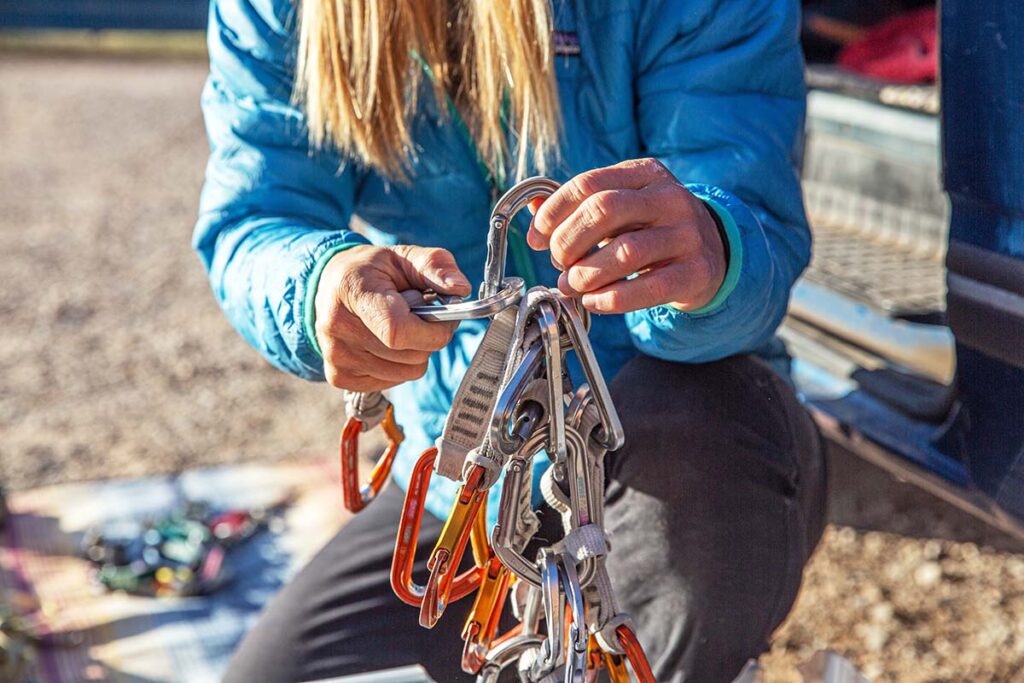
Best uses: sports, traditional and alpine
Quickdraws are mainly used in sport climbing, but they can also be a good piece of equipment for traditional and alpine climbing. Depending on the style of climbing it is intended for, a speed draw will vary in weight, size, stiffness, carabiner type, etc. To help you make your choice, we’ve outlined the best uses for each speed draw above.
In quickdraws designed for sport climbing, handling will be a top priority. Whether you’re cutting the center of a ball or catching a ball while chasing it, you’ll appreciate a high-speed harness with a strong, wide dog bone, large carabiners with large holes, and “protective” rubber on the end. rope. To ensure the carabiner is oriented correctly. Most sport climbing quickdraws also come with a locking ring on the end of the bolt to prevent the nose from getting stuck when cleaning the quickdraw (more on this later). Professional climbers, on the other hand, will want a harness less focused on cutting efficiency and fast suspension and more on weight savings and versatility. These drags usually have a shaped flexible dog bone and smaller carabiners with metal clasps. Finally, Alpine doors are the lightest of the bunch and often sacrifice some comfort in the name of weight savings (some doors are too small to carry).
Some quickdraws are versatile enough for most scenarios (like one of our top picks, the Petzl Ange Finesse), while most remain discipline-specific. If you’re looking for an all-in-one device, keep in mind that you’ll likely sacrifice at least some features on both ends. Regardless of your climbing style, it’s always a good idea to have some mountaineering ropes (two loops connected to a strap that folds up to your shoulders) in your rack. Although alpine crampons are not easy to cut, they are an excellent tool for lengthening a loop or loosening the resistance of a rope (serious climbers may want to opt for an 8-inch rope like the Metolius Bravo Long Draw).
Keylocking Carabiners
Any rifle will have some sort of mechanism that allows it to “lock” the bolt, and we are not talking about a locking rifle lock. Take a closer look at a non-locking carabiner: any old carabiner will do. A spring mechanism keeps the gate closed, but there is always a small rod, prong, slot, or locking device at the end of the carabiner that allows the gate to stay securely in place. When a force is applied along the longitudinal axis of the hinge, it is this feature that keeps the door close to the tip. This is important: a closed carabiner typically holds three times the strength of an open carabiner.

Manufacturers create this lock one of two ways: the result is a keyed or keyless lock. We won’t go into technical details, but the keyed lock design has a smooth tip, while the non-locked design has a slot or hook on the tip. The keyed lock design is excellent, especially for sport climbing, as it is much easier to unlock than screws, bolts or straps. If you’ve ever tried to clean a crumbling driveway, you know exactly what we’re talking about. You pull hard against the wall, create some slack, open the carabiner and try to remove it from the clasp, only to get caught on the pesky tip of the hanger. It is quite tedious and can lead to interesting tricks if you are not trained in this art.
Instead of playing the “please put me back on the quickdraw” game, it’s a good idea for sport climbers to invest in a quickdraw game where at least the carabiner on the bolt side has a toothless locking system. This can be a hard key lock like the Black Diamond HotForge or a single wire lock like the Petzl Ange Finesse as long as there are no hard teeth when you open the lock. Locking carabiners tend to be a little more expensive, but for sport climbing they are worth it.
Carabiner Gates
Quick release carabiners come in a variety of shapes and sizes. The gates can be mesh or solid, curved or straight. Their sizes can range from miniaturized to gigantic (no technical term, but we’ll get to that later). Each has its pros and cons, so let’s quickly go over them all.
Wiregate vs. Hard Gate
Lobster gates come in two main styles: wire and solid. While the solid pin has nearly the same shape and design as the rest of the rifle, the metal pin is made of thin metal, which reduces weight and bulk. Their light weight also reduces pin movement (when the carabiner pin opens and closes slightly during a fall), making them slightly safer than solid pin carabiners. On the other hand, one-piece locking rings are more likely to have a key locking feature and are much easier to install. As a result, most high-end sports playgrounds have durable goals.
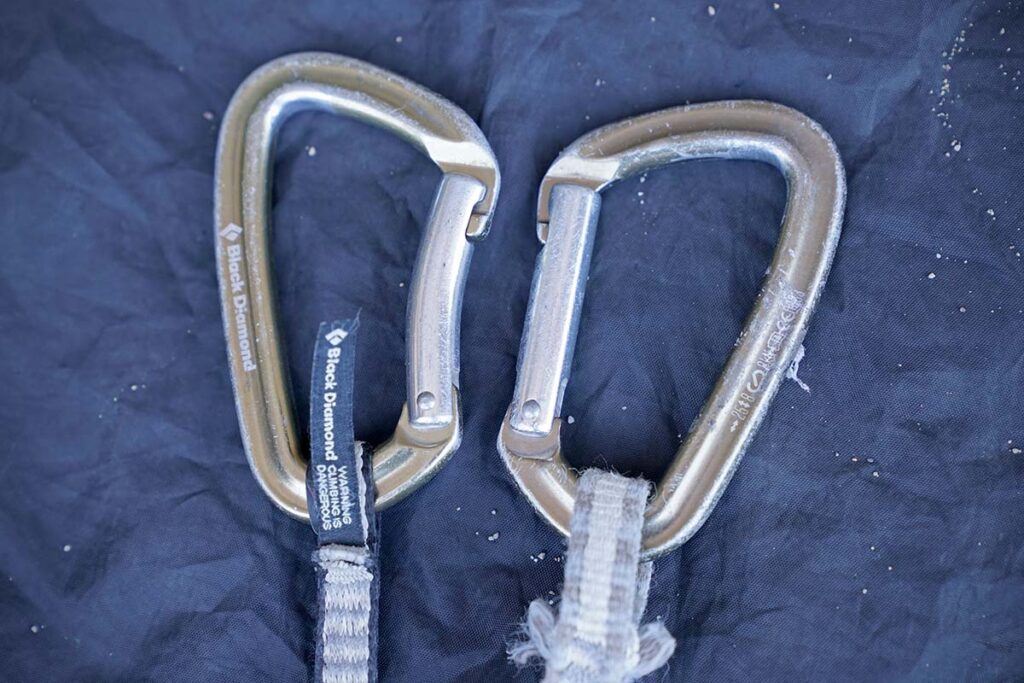
Good all-arounders like the Petzl Ange Finesse and Camp Dyon Express are a notable exception to this trend. Both quickdraws feature locking carabiners, offering the best of both worlds in terms of weight savings and performance (although most will still find it easier to attach a durable locking carabiner). However, aside from these examples, quick tightening using metal carabiners tends to be a little cheaper. For example, the $22 Black Diamond HotForge (5-inch version) includes two solid finger carabiners, while the HotForge Hybrid replaces the wire finger carabiner at the end of the rope, resulting in a 4-ounce lighter pull and $2 less. Finally, the $19 Black Diamond HotWire features two metal buckles.
Straight door vs curved door
Another way to differentiate carabiner levers is their shape: some are straight, others are curved. Straight gate carabiners are ideal for holding bolts, while curved gate carabiners offer a more secure feel at the end of a quick pull (their more ergonomic shape makes it easier to open the gate and acts as a guide for the climbing rope ). The disadvantage of curved finger carabiners is their cost: they are a little more expensive due to the additional step in manufacturing. As a result, cheap quickdraws typically have two straight locking rings, while high-end models use a curved clamp at the end of the rope. Ultimately, while we definitely prefer the ease of attaching a bent pin carabiner, we don’t think it should be a problem for new climbers (it took us more than ten years of climbing to develop a clear preference).
Carabiner Size
Quickdraw carabiners are available in different sizes, from small to large. The specification we have in mind when looking at carabiner size is “gate opening”. While this measurement refers to the distance from the tip of the carabiner to the fully open finger, and not just the width or length of the carabiner, it is related to the size of the carabiner (the smaller the carabiner, the shorter the length). . The entrance is small.) That’s why we use the entrance dimensions in our comparison table to determine the size of each carabiner.
As a rule, the smaller the carabiner, the lighter it is. But you should know that small carabiners greatly affect comfort. We know many climbers, especially those with larger hands, who refuse to use some small quickdraws (like the small Petzl Ange Finesse) because they are too difficult to engage.
Carabiner Metal: Aluminum vs. Steel
The vast majority of carabiners are made of aluminum, including almost all of those sold with quick-release clasps. Although aluminum is less durable, it is lighter and still very strong. The reality is that most quick release clips will need to be removed due to bone wear long before your car clips reach the end of their life. However, some equipment manufacturers make quickdraws using a steel (or partially steel) carabiner, such as the Edelrid Bulletproof. Overall we think this is overkill and unnecessary, but if you often wear a quickdraw or use a steel quickdraw only in the first section (where most of the wear on the quickdraw occurs on the string), the steel probably won’t harm your custody. .
Dogbones
Dog bone is a soft stitched fabric that connects two loops when pulled quickly. Most dog bones are usually made of dyneema (light and thin) or stitched nylon or polyester (thick and heavy). Once again, there is a very clear distinction between the different types of climbing. Thicker, stiffer dogbones with built-in crampons are preferred for sport climbing, while lighter, thinner Dyneema bones are the choice for alpine and traditional climbing.
The main advantage of fat and heavy dog bones is that they are easier to handle, grasp and hold when you are about to start sporting activity. In alpine and traditional climbing, most of us think less about holding onto the bolt and more about simply keeping our pace light on the day’s climb. That doesn’t mean there can’t be crossovers. We used bold sports prints for traditional sports and skinny sports prints for athletic activities. In the end, it doesn’t matter. However, most people would agree that it is always a good idea to have the most efficient tool for the job.
Quickdraw Length
The quick weights on this list range from 10cm to 25cm in length, often with different options for each item (note that this will determine your dog’s bone length). There is no absolute rule regarding the length of the boy. Some climbers like them shorter and some climbers like them longer. The advantage of a longer quickdraw is that it reduces drag on the string. Even a difference of a few centimeters will equate to more than 12 nails. However, a 10-inch quickdraw may be too long and awkward to tie and is probably best used for mapping important sport routes. On steep surfaces, your body is hanging off the wall, so it’s also a good idea to hang the box higher to waste less energy pulling it in and carrying it.
If you tend to climb vertical or sport routes on very exposed rock so that the line goes straight up with little deviation, shorter sections will be a better option. After all, it’s nice to have a few of each. Sometimes a longer quickdraw can make a difficult crossing a little easier, while a shorter quickdraw can help you stay off the bridge at crucial moments.
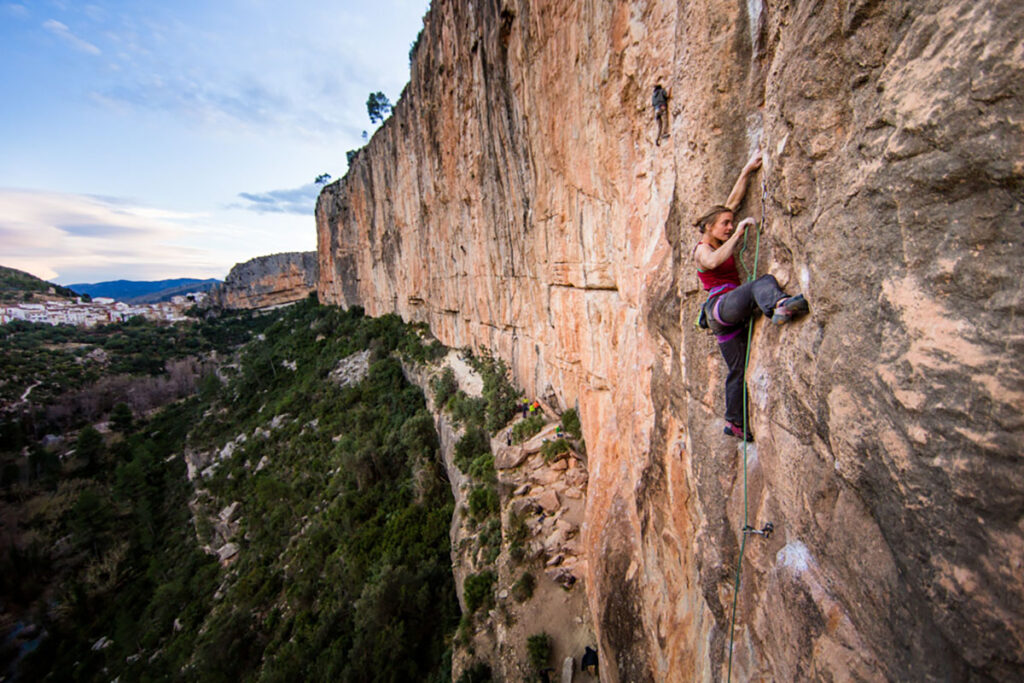
Quickdraw Weight
In most cases, competitive climbers don’t care about the weight of their speedleighs (the only exception might be the burners they’re hanging from on the speedleigh). Generally, climbers prefer ounces over other features. That’s why a fast tug like the Petzl Spirit Express, one of the heaviest and bulkiest models on our list, is a favorite among sport climbers but is rarely used in the mountains. There’s a big difference between 10 powerful, heavy Petzl Spirits hanging from your belt and the lightweight, aerodynamic 10-lead Black Diamond MiniWire. In general, size determines weight, as is the case with aluminum and steel carabiners and dynamo carabiners with nylon ones. As with most categories of outdoor gear, the lighter the weight, the less durable the quickdraw becomes over time.
Strength and Safety
Nearly all quickdraws sold by major equipment manufacturers require carabiners and dogbones to meet UIAA and CE strength standards. While a dog’s bone strength is easy to understand, a rifle’s strength is classified into three different directions: long axis (longitudinal), short axis (laterally), and open bolt (with force on the main axis). Axis). If used correctly, force will be applied along the main axis of the ring when the door is closed, but in the event of user error, the rings provide a safety net, generating decent forces with the door open or on the axis secondary. Most riflemen will list these three main points in their column. While all quickdraws are designed to withstand multiple drops, in general, the larger or thicker the carabiner, the longer it will last.
When to Retire a Quickdraw
There are two main load-bearing parts of a speed quickdraw, the safety of which must be constantly monitored: carabiners and dog bones. Look in the carabiner for cracks, chips and deep grooves where the rope passes (they often form sharp points) and make sure the gate is completely closed (the carabiner for an open gate is much weaker). For dog bones, detecting wear can be a little more ambiguous. Some scratches are noticeable (scratches, large dents, or severe fading from the sun), while others are completely invisible. For example, soft clothes exposed to solvents, bleach, harmful fumes or even urine can significantly weaken. Of course, to be on the safe side, manufacturers generally recommend replacing Dyneema products every three years and nylon products every five years.



